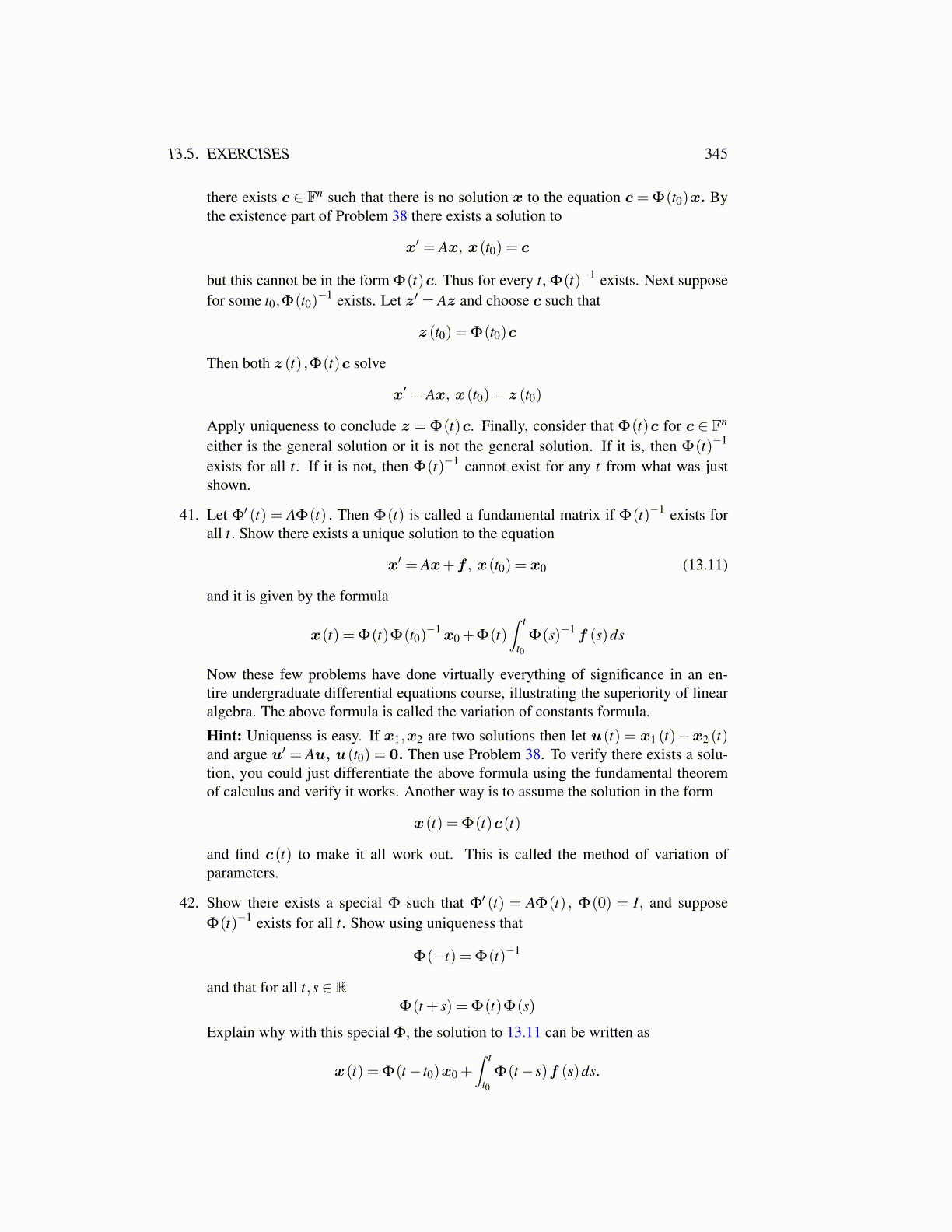
13.5. EXERCISES 345
there exists c ∈ Fn such that there is no solution x to the equation c = Φ(t0)x. Bythe existence part of Problem 38 there exists a solution to
x′ = Ax, x(t0) = c
but this cannot be in the form Φ(t)c. Thus for every t, Φ(t)−1 exists. Next supposefor some t0,Φ(t0)
−1 exists. Let z′ = Az and choose c such that
z (t0) = Φ(t0)c
Then both z (t) ,Φ(t)c solve
x′ = Ax, x(t0) = z (t0)
Apply uniqueness to conclude z = Φ(t)c. Finally, consider that Φ(t)c for c ∈ Fn
either is the general solution or it is not the general solution. If it is, then Φ(t)−1
exists for all t. If it is not, then Φ(t)−1 cannot exist for any t from what was justshown.
41. Let Φ′ (t) = AΦ(t) . Then Φ(t) is called a fundamental matrix if Φ(t)−1 exists forall t. Show there exists a unique solution to the equation
x′ = Ax+f , x(t0) = x0 (13.11)
and it is given by the formula
x(t) = Φ(t)Φ(t0)−1x0 +Φ(t)
∫ t
t0Φ(s)−1f (s)ds
Now these few problems have done virtually everything of significance in an en-tire undergraduate differential equations course, illustrating the superiority of linearalgebra. The above formula is called the variation of constants formula.
Hint: Uniquenss is easy. If x1,x2 are two solutions then let u(t) = x1 (t)−x2 (t)and argue u′ = Au, u(t0) = 0. Then use Problem 38. To verify there exists a solu-tion, you could just differentiate the above formula using the fundamental theoremof calculus and verify it works. Another way is to assume the solution in the form
x(t) = Φ(t)c(t)
and find c(t) to make it all work out. This is called the method of variation ofparameters.
42. Show there exists a special Φ such that Φ′ (t) = AΦ(t) , Φ(0) = I, and supposeΦ(t)−1 exists for all t. Show using uniqueness that
Φ(−t) = Φ(t)−1
and that for all t,s ∈ RΦ(t + s) = Φ(t)Φ(s)
Explain why with this special Φ, the solution to 13.11 can be written as
x(t) = Φ(t− t0)x0 +∫ t
t0Φ(t− s)f (s)ds.